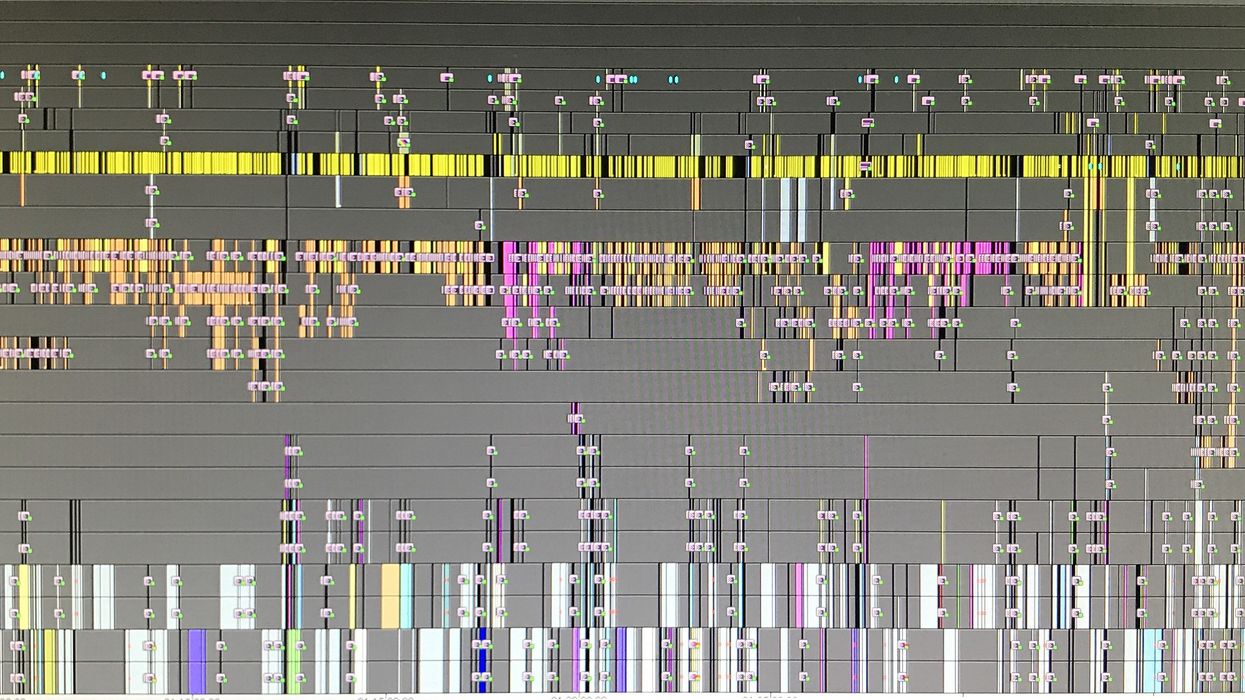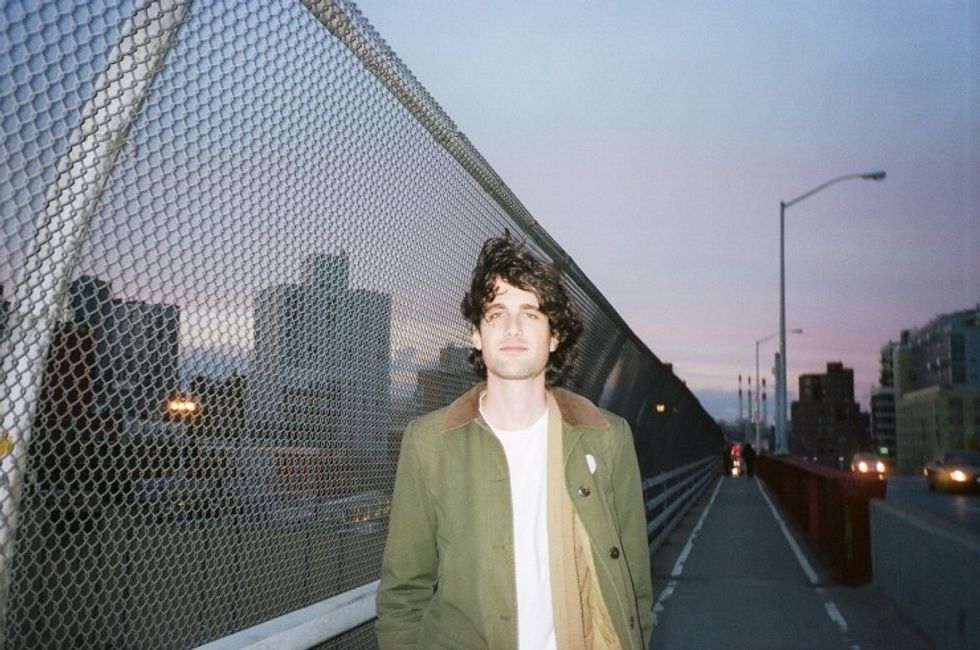The Truth About Reality TV Post Workflow
Interview

Brooklyn-based television editor and video maker Sam Pettibon let No Film School into the real world of reality TV editing.
For many of us, what really goes on in the post-production process of reality TV is a mystery. We know there are unthinkable amounts of footage to be sorted, an overwhelming number of production sound sources to manage, and infinite story possibilities. Editing reality TV seems like the ultimate puzzle.
For the last three years, Sam Pettibon has worked on post-production for Bravo’s reality television series, The Real Housewives of Atlanta. In this interview with No Film School, we asked him to tell us all about the post process from start to finish.
No Film School: Starting at the beginning of the workflow, how much footage are you working with? How is all of that media managed and how do you organize your bins?
Sam Pettibon: The show shoots for about 6 months so we have hundreds of hours of footage! Assistant Editors have a huge job and are in charge of all of the footage and organization across the projects. They do a lot of communicating with everyone on the team. I've had a ton of experience as an assistant editor, and you really have to be on top of your game.
Bins are organized by date and then by scene name. Each scene has its own bin which contains a 'multigroup' – This is all of the camera angles and audio sources from that scene synced up into one watchable file.
NFS: So, you sent us this screengrab of one of your timelines. It’s pretty intimidating. Can you tell us about your sequence organization and how you manage it?
Pettibon: It does end up looking intense when everything is strung together! I generally try to keep the video down to one track and not have them stack up, but some effects end up using multiple video tracks.
For audio- I try to keep the dialogue on the top, SFX in the middle and music at the bottom.
NFS: It sounds like you’re doing a lot of sound design while you edit.
Pettibon: I spend a lot of time making sure the right mics are being used, and that offscreen characters are muted. You're also doing a rough mix of the levels as you go- otherwise it would be unwatchable! It can get complicated in larger scenes when the whole cast is talking at the same time, and someone's mic is buried. I tend to do a lot of color coding to stay organized.
NFS: How do music and B-roll play a role in your editing? When do you start incorporating those elements into cuts?
Pettibon:Music and B-roll are a big part of the general feel and pacing of the show. I think the approach varies from scene to scene, but I like to get to a place where the audio and cameras are making sense and then focus on scoring. B-roll is also pretty essential for covering jump cuts and keeping up continuity.
There are bins of music and B-roll available- but the search for fresh stuff is constant! Especially when scoring a scene. Sometimes you can get lucky and find something with the right feel on the first try, or it can take an hour.
NFS: With so much going on at once, do you find yourself often jumping around to work on multiple episodes?
Pettibon: On our show, editors generally start working on one episode- but there are several rounds of notes, so we jump around as schedules change and wherever the most work is needed.
At the height of the season there can be up to 10 editors working at the same time. I mostly bounce around and do scene work on different episodes.
NFS: Are you receiving dailies while production is still shooting, or are you working with footage from the whole season by the time you start cutting?
Pettibon:The field continues shooting for about half of the year while we're working on the episodes. Eventually we catch up! Producers are watching dailies the whole time and planning scenes. Story Producers are incredible and watch everything over the course of the season.
NFS: Can you tell us more about your relationship with the Story Producers throughout the post workflow?
Pettibon:Story Producers are involved with the cut from start to finish, thankfully! They are the ones watching all of the footage and working out what's going to happen in the show. They make cut-downs for each scene which include the general beats of the story, and that's what I start to work with. Most of the time we are bouncing cuts back and forth, making sure scenes work and that notes are being addressed.
NFS: How much feedback are you getting on cuts throughout the process, and how much time do you generally get to spend on an episode?
Pettibon: The show goes through several rounds of notes- both internally and from the network. We have Rough Cut, Fine Cut 1, Fine Cut 2, Picture Lock and Lock Cut. Ideally, a full episode from start to finish takes about 2 months.
NFS: What are some tricks in your editor’s toolbox you use for editing unscripted TV? Are you often creating moments that aren’t really in the footage?
Pettibon: Editing unscripted TV seems to be much more like solving a puzzle. You are constantly taking the cut apart and putting it back together again. You are often building something that didn't happen out of a bunch of stuff that did. There are certain effects that I like and probably use too much! Dropping out music, puzzled reaction shots and big stings all seem to be very popular in reality...
Generally, when a character gives a big reaction, they are most likely reacting to something completely different then what the scene is implying. Using bigger, or just unexpected reactions helps make the show more exciting and keeps people watching.
There's also 'franken-biting'- which is never ideal but happens a lot. This means having someone deliver a line off-camera, and cutting it up- pulling words from wherever and whenever the character speaks in the footage, to create a line that moves the scene along better.
NFS: Reality TV is famous for fast turnarounds! Is there even time to roundtrip into other software for finishing?
Pettibon: We do everything in Avid from start to finish. Once an episode is locked it goes to the Online Editor- who does the full-color design in-house. I believe they run Avid Symphony. The audio mix and GFX are outsourced- but I suspect this varies with each company. We're working with lo-res proxy media, so the entire show goes through the process of being 'uprezzed' before going to the online editor.
NFS: Lastly, how did you get here, Sam? What was your journey to editing unscripted TV and documentary?
Pettibon:I studied Film & TV in school and got really into documentary. Right after graduation I was lucky and got to travel with bands and film all over the place. Looking back, the connection between documentary and reality TV is pretty clear, but I honestly never imagined myself here – and the two things are so different that I didn't see the connection for a long time.
I've worked on The Real Housewives of Atlanta on and off for about three years. I've been everything from Assistant Editor, Web Editor, Additional Editor etc. and have worked on smaller shows and development projects throughout that time. I like the feeling of going to work and making something every day. I also just like watching the raw footage. I think the characters are genuinely interesting in real life, and the way different personalities manifest on screen is fascinating to me. A lot of things about the job are challenging, but I'd say the fast turnarounds are what keep me on my toes the most.

You can learn more about Sam Pettibon and his work here.

 No Film School's coverage of
No Film School's coverage of 









